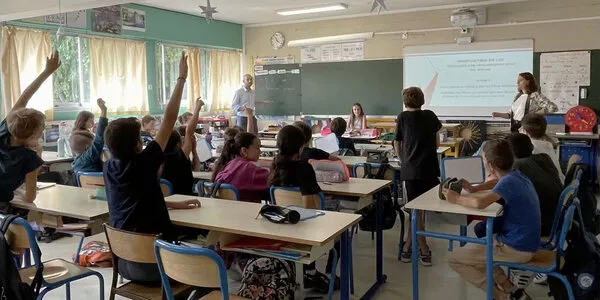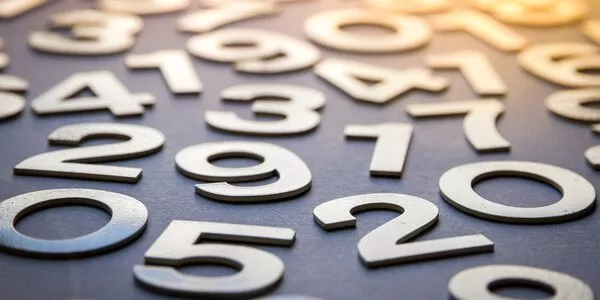
An inspiring Rugby World Cup for personal finance
The Rugby World Cup is upon us, and fans can swap their sunscreen for face paint. The game of the oval ball is also our opportunity to examine two concepts that influence our decision-making: the “clustering illusion” and the “decoy effect”. Edouard Camblain, behavioural finance expert and Head of Strategic Projects & Development at Societe Generale Private Banking, tells us more.
One conversion does not a winning streak make
Other than to admire the beauty of the game, we’re supporting Les Bleus in the hope France will win the Webb Ellis Cup at the end of October. Until then, we’ll quiver as players race to the 22-metre line, explode with joy with every try scored... and hold our breath with every kick to convert a try or take advantage of a penalty.
Let’s pause for breath on these kicks aimed between the goal posts and over the crossbar. They are not unlike free throws in basketball (where the player tries to make the basket from a distance of 4.6 metres following a penalty) which was the subject of a famous study in 1985(1). In it, the authors challenge the “hot hand” or “streak shooting” myth according to which basketball players who score on their first free throw are more likely to score on their second throw. The study examined the free throws of the Philadelphia 76ers and the Boston Celtics, demonstrating that players have a 75% chance of making the second shot when they hit their first shot.... but also when they miss their first shot!
This “clustering illusion” — the misconception that a random sequence of events is not random — is a source of errors. We are therefore well advised to not extrapolate an asset or asset class’s performance on the basis of past performance! The tendency to do so was illustrated in a study in 2011(2): based on the analysis of past performance (1991-1996 and 1997-1999), researchers showed that individual investors have a high propensity to top up on shares that delivered returns in the past, to the detriment of shares that made a loss.
So don’t fall for the illusion of clusters... as much as you’d like your favourite kicker’s successful shot to be the start of a winning streak!
Half-time: appetite vs. appeal
Whether you are one of the lucky ones watching in the stadium, or are catching the game on the big screen at a fan park, you might fancy something scrum-ptious at the refreshment stands. And you will be spoiled for choice: coffee, popcorn and soda in all shapes and sizes, providing a fine example of the “decoy effect” (also known as the asymmetric dominance effect).
In 1982, American researchers(3) (by giving 93 students a choice of cars, restaurants, beers, lotteries, films, and television sets) demonstrated for the first time how the introduction of a decoy can influence choice.
Imagine it is half time. Your favourite team is in the lead… and all that excitement has worked up quite an appetite! Faced with the choice of two sizes of popcorn (a small 100g box for 4 euros and a large 400g box for 10 euros), and then presented with a third size (a medium 250g box for 8.5 euros), you’ll more than likely be persuaded to choose the larger of the two (the seller’s goal)! Irrespective of how hungry you are, the bigger format seems to be a better deal than the medium box — the decoy — without which you probably would have gone for the smaller size. As a rule, introducing a third, less appealing option (decoy) than the target, influences the choice which in turn sways the consumer’s preference faced with the first two options (small and large).
You guessed it: the decoy effect is part of everyday life and can influence how much money we spend. More fundamentally, it has been proven(4) that introducing a decoy can also affect financial decisions, such as investing in shares: the choice between growth stocks and dividend-income stocks of varying yields can be intensified by introducing a decoy with carefully chosen intermediate dividend rates and yields.
You can avoid this bias by analysing your preferences and paying only for the things your want. When buying a car, for instance, the fastest, most attractive model is not necessarily what you need.
With these insights, you’ll be the unrivalled captain of your finances!
(1)The hot hand in basketball: On the misperception of random sequences, T. Gilovich, R. Vallone, et A. Tversky, A. (1985)
(2) Once Burned, Twice Shy: How Naïve Learning, Counterfactuals, and Regret Affect the Repurchase of Stocks Previously Sold, M-A. Strahilevitz, T. Odean, et B-M. Barber (2011)
(3) Adding Asymmetrically Dominated Alternatives: Violations of Regularity and the Similarity Hypothesis, J. Huber, J-W. Payne, C. Puto (1982)
(4) The Decoy Effect and investors' stock preferences, B. Paris (2012)





